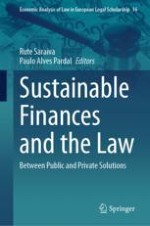2024 | OriginalPaper | Buchkapitel
Benchmarking of National ESG Banking Regulations: State of Art and Remaining Challenges
verfasst von : Luciane Moessa de Souza
Erschienen in: Sustainable Finances and the Law
Verlag: Springer Nature Switzerland
Aktivieren Sie unsere intelligente Suche, um passende Fachinhalte oder Patente zu finden.
Wählen Sie Textabschnitte aus um mit Künstlicher Intelligenz passenden Patente zu finden. powered by
Markieren Sie Textabschnitte, um KI-gestützt weitere passende Inhalte zu finden. powered by
